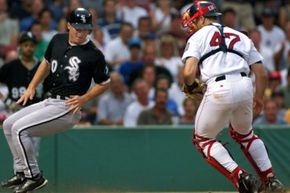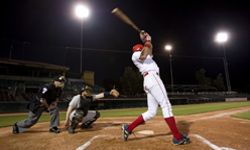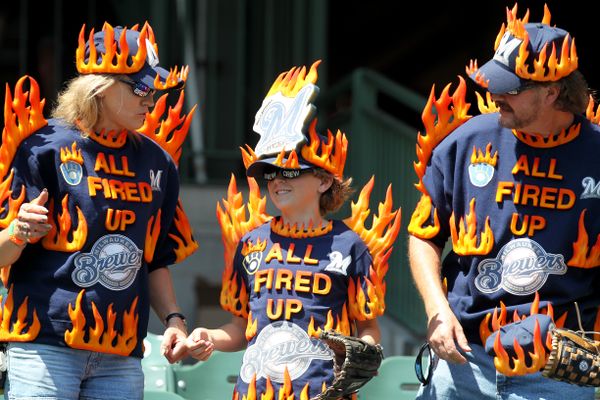Major League Baseball Commissioner A. Bartlett Giamatti once favorably compared his sport's "law and lore" to America's system of jurisprudence. Giamatti was talking about a "level" playing field, but he might just as easily have been describing how both law and sport produce peculiar procedures from seemingly simple rules [source: Deford].
Take baseball's part-rule, part-event, part quantum physics experiment, the fourth out. Here one moment, gone the next, it is both an out and not an out. It is Schrödinger's out, and it makes the infield fly rule look simple by comparison.
Advertisement
A fourth out happens when a third out has already been made but a prior out on the same play -- typically caused by a rules violation -- has not yet been called. The defense successfully makes an appeal while the ball is still live, and the umpire calls a temporary fourth out that (usually) replaces the existing third out. This not only affects players' stat blocks; it can also deny the offense one or more runs [source: MLB].
To understand why, we must grapple with one of baseball's more baffling aspects: When does a run scored during the third-out play count?
If you think that a runner who crosses the plate before the defense makes its third out scores a run, you're not alone, but you're also not necessarily right. Under rule 4.09, the run would not count if, for example, the third out was a force-out -- an out against a runner who has lost the right to occupy a particular base because of the batter becoming a runner -- or if the third out is made against the batter-runner. Similarly, if two runners cross the plate near each other, but the first runner fails to touch either home or a previous base and is tagged out, then the second run won't count, even if he crossed before the tag (again, assuming two outs) [source: MLB].
The second example describes an appeal play, the key to triggering a fourth out. As the name suggests, an appeal play combines an appeal -- pointing out a rules violation to an umpire -- and a play -- tagging the base or the runner to make an out [source: MLB].
Even if you don't know it by name, chances are you've seen an appeal play -- say, when a runner scoring from second misses third base, or when a scoring runner from third fails to tag up on a caught fly ball. In either case, the fielder could alert the umpire and tag the bag or the runner to get the out. Well, if either of these circumstances happens during a third-out play, the resulting appeal play triggers a fourth out and removes the scoring run, because the runner is considered out at the base where the violation occurred, and therefore never scored [source: MLB].
Confused? A few examples ought to clear things up. Or not ...
Advertisement



